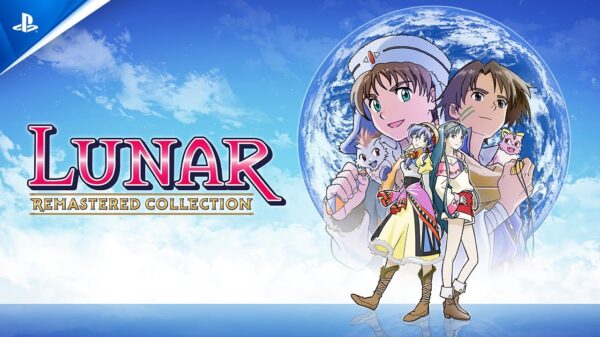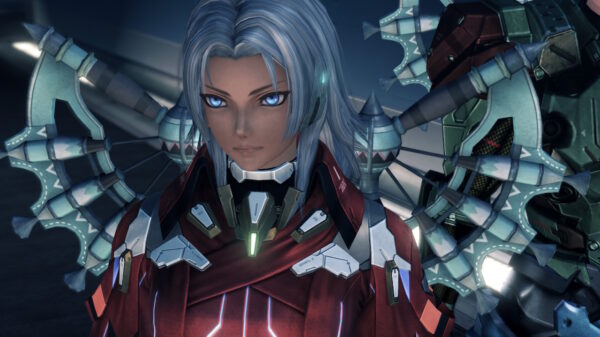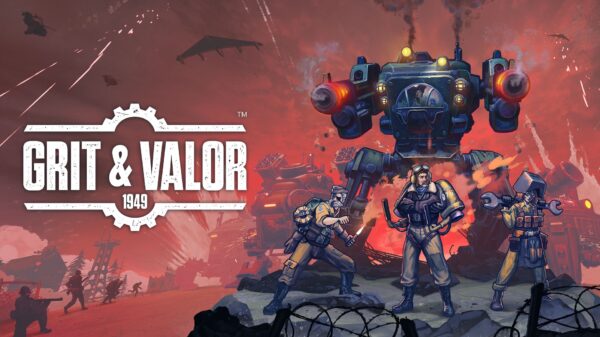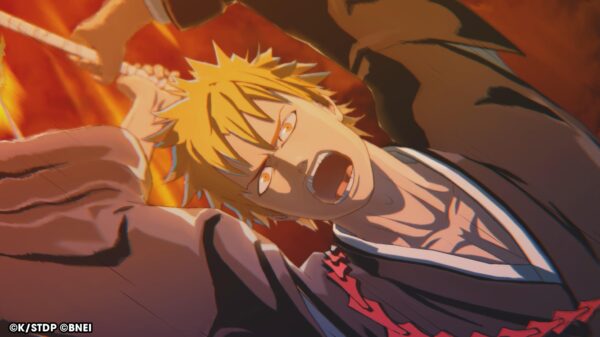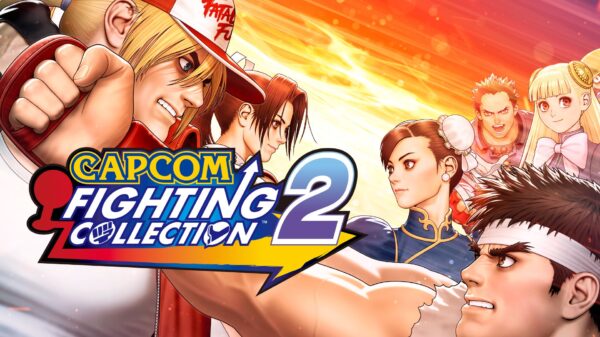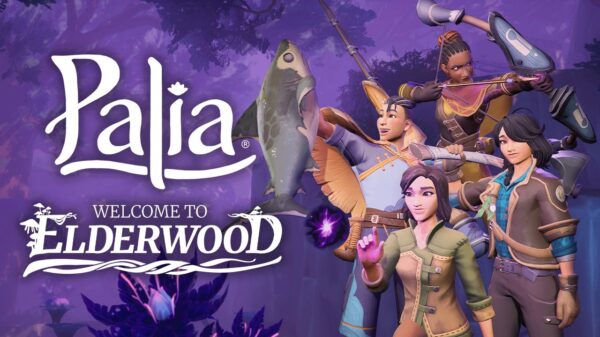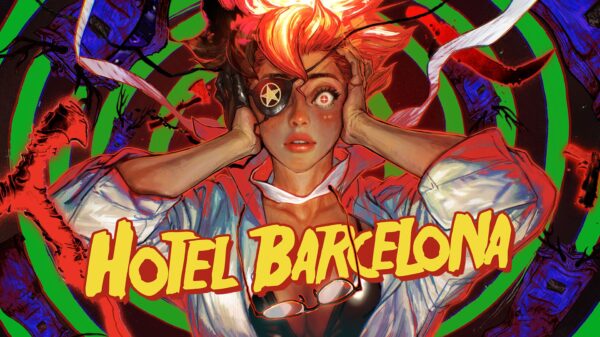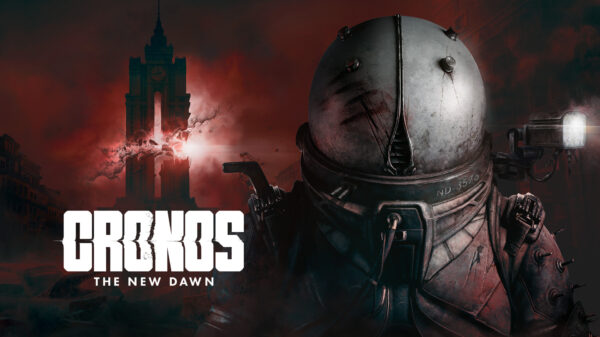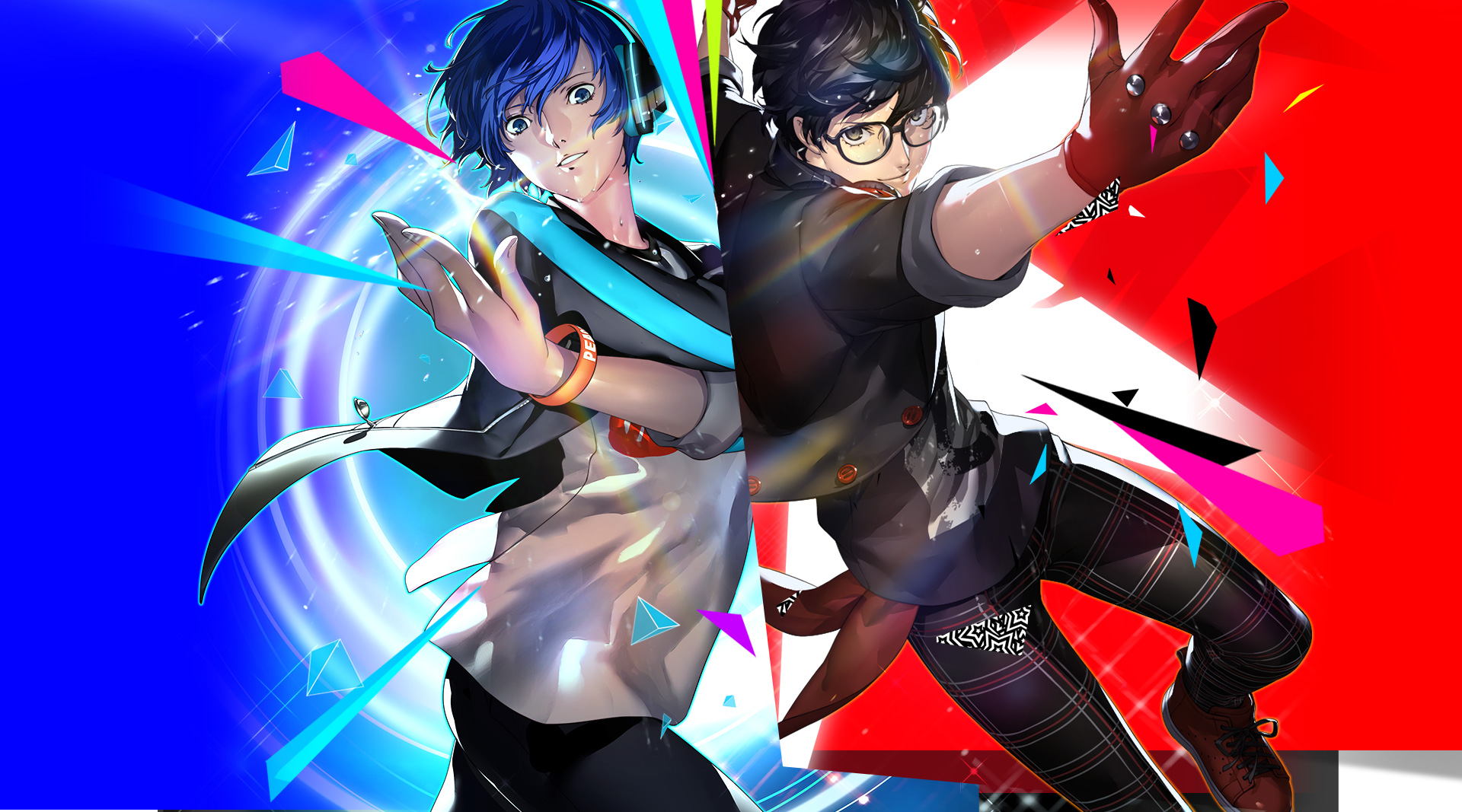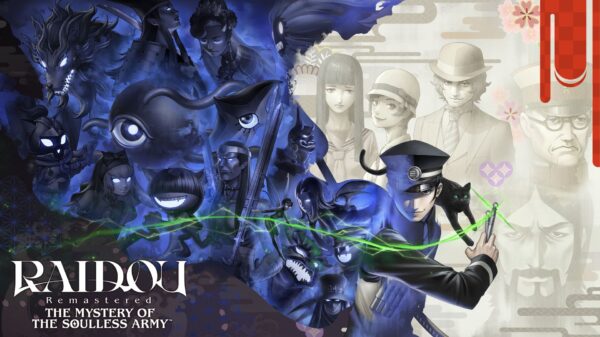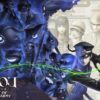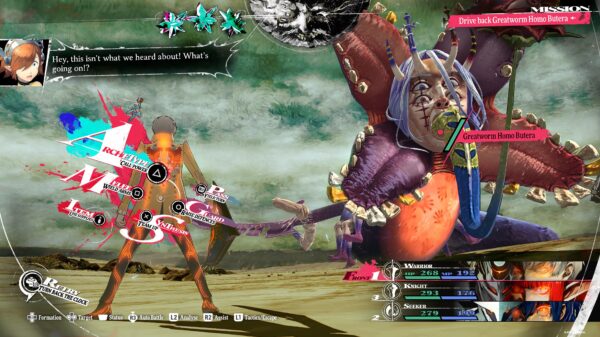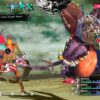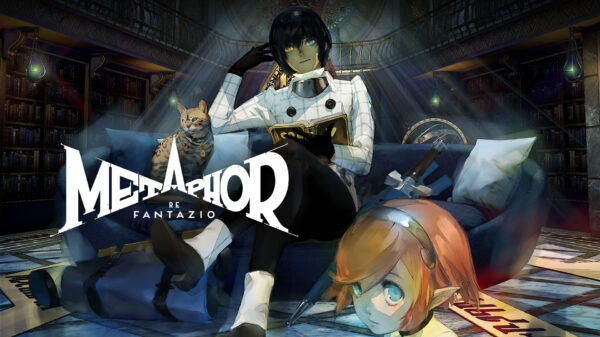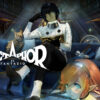Though they lack the robust story and presentation of Persona 4 Dancing All Night, both Persona 3: Dancing in Moonlight and Persona 5: Dancing in Starlight are incredibly fun rhythm games that successfully emulate some of the best parts of the Persona franchise.
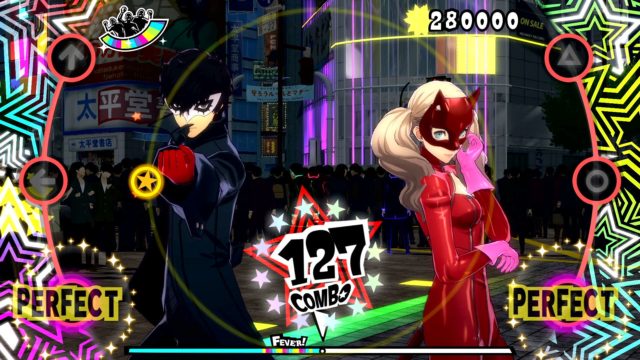
Persona 3: Dancing in Moonlight and Persona 5: Dancing in Starlight
Developer: Atlus
Price: $99.99 as a bundle with Persona 4 Dancing All Night,
$59.99 individually on PS4, $39.99 individually on Vita
Platforms: PS4 and PS Vita
MonsterVine was provided with a PS4 code for review
After the release of Persona 4: Dancing All Night, it’s only natural that Persona fans would want Persona 3 and Persona 5, the two other fan favorites, to receive similar spin-offs. It took a while, but Persona 3: Dancing in Moonlight and Persona 5: Dancing in Starlight are finally here. But are they worth grabbing for Persona fans? Probably, though you’ll have to lower your expectations on how much plot you’ll be getting.
While the plot of Dancing All Night was, surprisingly, one of its best features, Dancing in Moonlight/Starlight aren’t as focused on narrative. Both stories are still goofy and self-aware, which works perfectly, but these aren’t major continuations of either Persona 3 or Persona 5. They’re fun and goofy rhythm games featuring beloved characters and music from the Persona series, and while a plot like that of Dancing All Night would be ideal, that’s all Dancing in Moonlight/Starlight really have to be. Fun, goofy, fan-service-filled rhythm games.

The stories for both are essentially as follows: main characters wake up (in a dream) in the Velvet Room and are told they have to learn to dance by Elizabeth/Caroline and Justine. Confused, the groups go with it and dance their hearts out, establishing some small social links along the way. It’s basic and dubiously canon, but the stories do exactly what they need to do: make up a reason for these anime teenagers to dance like idols to some remixed club bangers from throughout the Persona series. Bits of additional story are unlocked through social links between characters, though these interactions are mainly about dancing, with the occasional callback to each character’s plotline from their original games. The story is presented through 3D models rather than animated illustrations, which I found to be a step-down. The models can look pretty odd at times, whether it’s because of their idle animations or wonky facial expressions. The models are definitely more made for dancing than talking, which is understandable, but still a bit disappointing.
“The inclusion of social links in general is great […] as it makes these two spin-offs feel more in-line with the base Persona series“
Honestly, the most interesting story bits come from social links with Elizabeth, Justine, and Caroline, as these links tell you about the dynamics of the Velvet Room “family”. Catherine and Theodore (Velvet Room attendants from Persona 4 and the Female Protagonist route of Persona 3) are mentioned and alluded to, painting an interesting picture of the very strange relationship between all these siblings. Sure, it’s fun to see the main characters from Persona 3 and 5 interact again, but if you’re like me, you’ll probably want to focus on the Velvet Room attendants’ social links. The inclusion of social links in general is great though, as it makes these two spin-offs feel more in-line with the base Persona series (or at least 3–5, for any hardcore purists who may be reading).
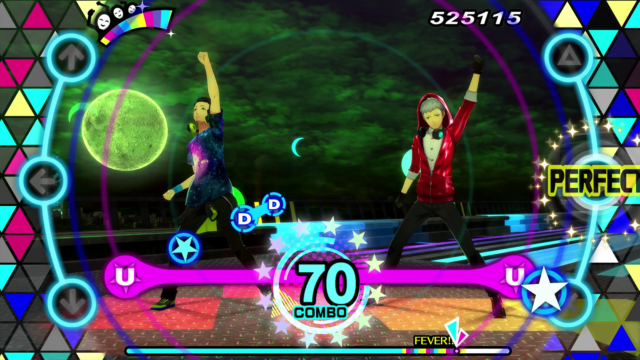
The gameplay of Dancing in Moonlight/Starlight will be familiar to anyone who played Dancing All Night, outside of a few minor additions. As your character dances in the background, you have to hit various button inputs as they enter small circles on the outside of a large ring in the middle of the screen. Without mincing words, it’s simply a lot of fun to nail each input in-tune with any of the fantastic songs playing in the background. Though your timing determines whether each press is GOOD, GREAT, or PERFECT, it becomes easier to get consistent PERFECTs as you get more familiar with the game. Few things feel as good as getting a row of PERFECT hits on your favorite song as the best part comes on, especially if it triggers Fever mode and drags a second character on stage to dance in sync with you.
Both Dancing in Moonlight and Dancing in Starlight suffer from the same issue as Dancing All Night did: keeping track of button inputs is difficult when the background dancing is so colorful and visually flashy. The dancing is part of the appeal of both games, yes, but it can get rather difficult to keep up when buttons are flying at you while Junpei and Aigis are doing cartwheels and backflips in front of coffins from the Dark Hour. Like with Dancing All Night, I can’t really think of any ways to fix this issue since the dances are (obviously) a major part of the game, though playing on a smaller screen does help with keeping track a bit.
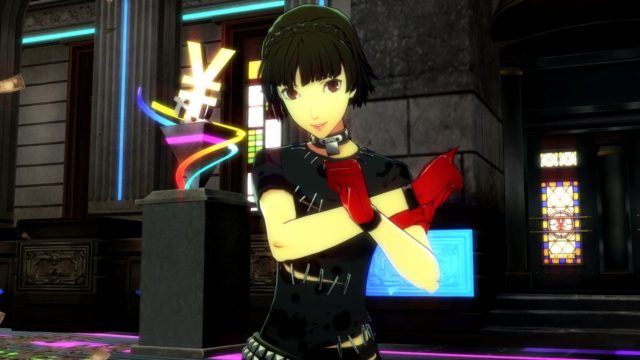
You can customize each character’s appearance a fair amount, as there are dozens of costumes and accessories in total. Costumes from Persona 3 and 5 are available, alongside more fanservicey outfits. Summer uniforms, bathing suits, and incredibly uncomfortable burlesque outfits are a small sampling of what’s available, with each costume and accessory being unlocked as you progress through each game’s tracklist and various Social Links.
“Both Persona 3 and Persona 5 have stellar soundtracks to begin with, so it’s no surprise that the jazzy remixes of their best songs are the best part of the rhythm games based on those titles.“
Speaking of tracklists, both Dancing in Moonlight and Dancing in Starlight have excellent collections of songs and remixes from both Persona 3 and Persona 5. Jamming out to remixed classics like Mass Destruction and Burn My Dread, and remixed soon-to-be classics like Last Surprise and Rivers in the Desert never gets old, as I found myself trying to get higher scores on certain songs just so I could keep hearing them while playing. Both Persona 3 and Persona 5 have stellar soundtracks to begin with, so it’s no surprise that the jazzy remixes of their best songs are the best part of the rhythm games based on those titles. Different characters will also make comments about your dancing during each song, which can be pretty funny at times. Yusuke’s fixation on how “revealing” your dancing is, and the various “phrasing” comments that follow these observations, keep things entertaining, though you can turn the commentary off if you find it distracting.
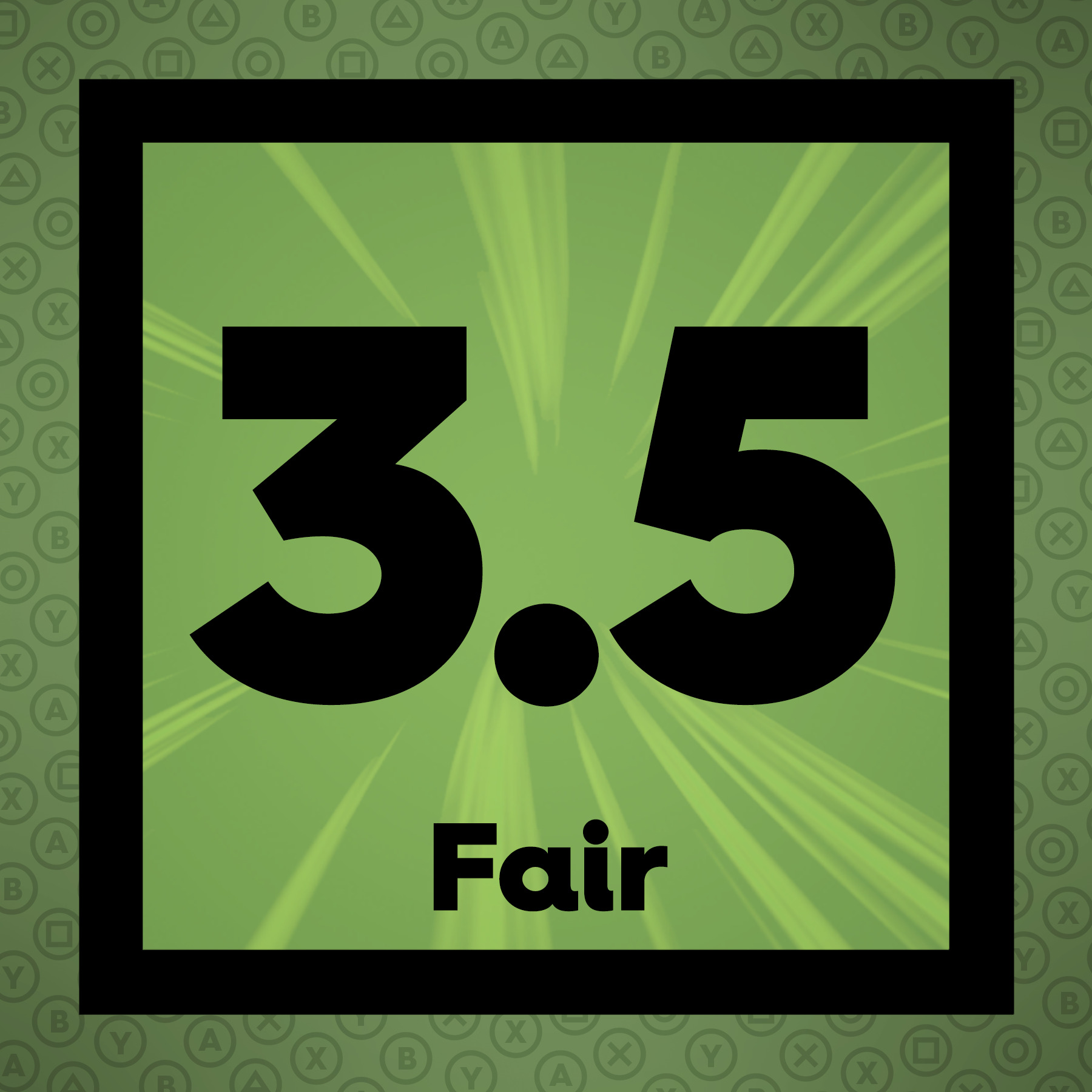 The Final Word
The Final Word
Though they don’t have the fleshed-out story of Persona 4: Dancing All Night, both Persona 3: Dancing in Moonlight and Persona 5: Dancing in Starlight are incredibly fun rhythm games with killer soundtracks. It can be difficult to keep track of what’s going on now and then, but both games are such a blast to play that it’s not hard to forgive their flaws.
MonsterVine Rating: 3.5 out of 5 – Fair

